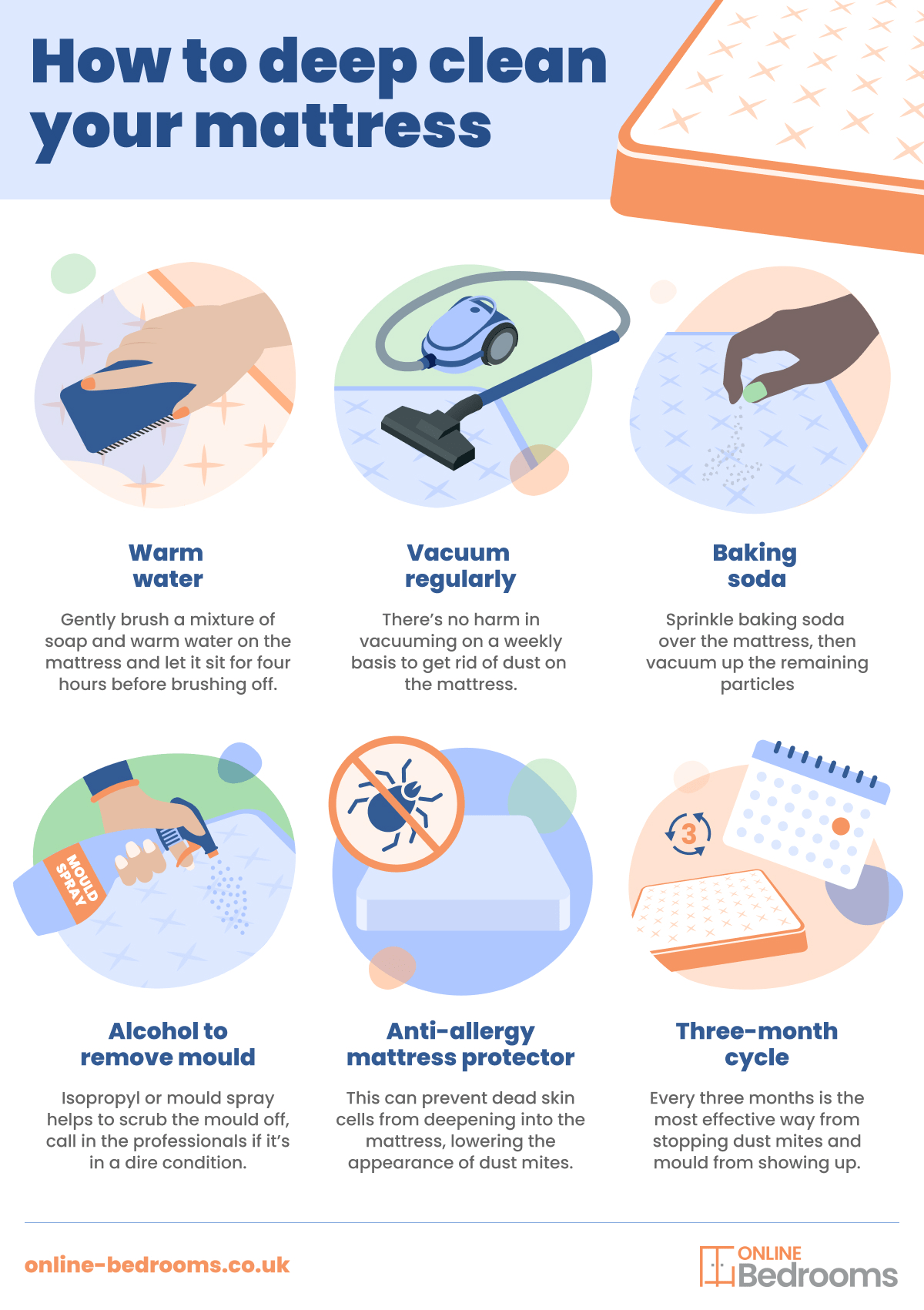Why You Need To Deep Clean Your Mattress Every Three Months To Stop Dust Mites and Mould
It’s easy to neglect your mattress - after all, who has the time to include that in their cleaning schedule? But it is really important if you want to prolong the life of your mattress and enjoy a good night's sleep.
Here at Online Bedrooms, we recommend a three-month cleaning cycle to prevent dust mites and mould from appearing beneath the sheets.
We’ve looked at why it’s important to take extra care of our mattresses rather than leaving them until the six-month mark before they get a good deep clean.

Over time the build-up of dead skin and body sweat on your mattress can create an environment which loves mould and dust mites. Dust mites are minuscule pests which are attracted to dead skin cells from warm environments within the bedding - something you definitely don’t want sharing your bed with you.
The appearance of dust mites can be a trigger to those suffering from allergies and asthma, with common symptoms including itchy skin and sneezing.
This is why it’s so important to set a proper mattress cleaning routine. Doing it infrequently means any problems will go undetected until it’s too late. And we all know keeping on top of chores like this really doesn’t add too much time to our day - it’s just the thought of them that stops us from tackling them head on.”
We’ve put together these tips to deep clean mattresses and how to make them safe to sleep on:
Warm water
Gently brush a mixture of soap and warm water on the mattress and let it sit for four hours before brushing off. Don’t outright pour all of the water directly onto the mattress, especially if there’s mould as it can make the problem worse.
Vacuum regularly
While a deep clean is needed every few months, there’s no harm in vacuum on a weekly basis to get rid of the dust on the mattress.
Flip it over
Both sides of the mattress need to be cleaned and not just the surface. It may seem like mould has disappeared after cleaning one side of the mattress, but this doesn’t mean that it’s lurking on the other side.
Baking soda
After putting the bedding in the wash, sprinkle baking soda over the mattress to absorb excess moisture from within it. Then hoover up the remaining particles before putting the bedding back on.
Alcohol to remove mould
Isopropyl or mould spray helps to scrub the mould off, if it’s in a dire condition, call in the professionals to tackle the cleaning job. But if the problem becomes severe, it may mean you need to replace the mattress entirely.
Invest in an anti-allergy mattress protector
A strong mattress protector can prevent dead skin cells from deepening into the mattress to help lower the chance of dust mites from appearing. Anti-allergy ones in particular will help to prevent dust from causing health problems.
Clean all the bedding
Pillowcases, bed sheets and duvet covers all need to be washed to ensure the mattress is in pristine condition. Mould and dust can spread from the bedding onto the mattress which can encourage the growth of both dust mites and mould.
Stick to the three-month cycle
The typical time to give the mattress a deep clean is every six months, but cutting this to every three months is the most effective way from stopping dust mites and mould from showing up.

How often do you regularly deep clean your mattress?
If you have your own unique way of preventing a dirty mattress, comment below to share your ideas.
Post comments
Leave A Reply
Your email address will not be published.